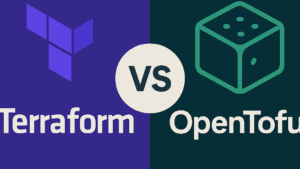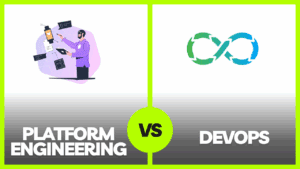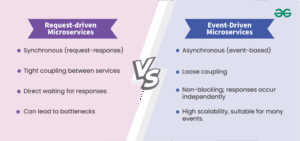In the ever-evolving landscape of technology, businesses are continually seeking ways to optimize their operations and enhance their efficiency. With the advent of cloud computing, organizations have found a solution that not only streamlines their processes but also provides scalability and flexibility. However, building a fully managed cloud architecture can be a complex endeavor, requiring the expertise and knowledge of professionals well-versed in the intricacies of the cloud. That’s where SlickFinch comes in. As leaders in the field, we have the experience and proficiency to guide businesses through the process of implementing a fully managed cloud architecture with AWS. Contact us today to unlock the full potential of cloud computing for your organization.

Overview of Fully Managed Cloud Architecture
A fully managed cloud architecture is a comprehensive approach to designing, implementing, and managing a cloud infrastructure that is built on third-party platforms and managed by the service provider. With a fully managed cloud architecture, organizations can leverage the power and scalability of the cloud without having to invest in the infrastructure and management resources themselves. This enables businesses to focus on their core competencies while leaving the technical aspects of their IT infrastructure to the experts.
What is a fully managed cloud architecture?
A fully managed cloud architecture involves the outsourcing of cloud infrastructure management to a service provider. This means that the service provider takes care of all aspects of the cloud architecture, including hardware provisioning, software updates, security patching, monitoring, and backups. In this model, the organization using the cloud services is responsible for their applications and data, while the service provider handles the underlying infrastructure.
Benefits of using a fully managed cloud architecture
There are several benefits of using a fully managed cloud architecture:
-
Cost-efficiency: By leveraging a fully managed cloud architecture, organizations can avoid the costs of hiring specialist staff and spending valuable time maintaining the infrastructure. The service provider takes care of the infrastructure, reducing the need for in-house DevOps staff and bandwidth.
-
Scalability and flexibility: With a fully managed cloud architecture, organizations can easily scale their infrastructure up or down based on their needs. This allows businesses to quickly adapt to changing demands without the need for significant investments in hardware or software.
-
Improved performance and reliability: Service providers specialize in managing cloud infrastructure, which means they have the expertise and resources to ensure high-performance and reliable service. This includes redundancy, load balancing, and automatic failover mechanisms.
-
Enhanced security: Service providers implement robust security measures to protect their infrastructure and the data of their clients. They have dedicated security teams that constantly monitor for threats and vulnerabilities, ensuring that the cloud architecture remains secure.
-
Focus on core competencies: By outsourcing the management of their cloud infrastructure, organizations can focus on their core competencies and strategic initiatives. They can allocate their resources and expertise to activities that drive their business forward rather than dealing with infrastructure management.
Introduction to Amazon Web Services (AWS)
Amazon Web Services (AWS) is a leading provider of cloud computing services. It offers a wide range of fully managed services that enable businesses to build and deploy applications and services in the cloud. AWS provides a secure, scalable, and reliable platform that allows organizations to take advantage of the benefits of cloud computing.
AWS offers a comprehensive suite of services that cater to various aspects of a fully managed cloud architecture. Whether it is compute resources, storage, databases, networking, or security, AWS has a service that can meet the requirements of any organization. With its global presence and extensive set of features, AWS has become a popular choice for organizations looking to build and manage their cloud infrastructure.
Designing a Fully Managed Cloud Architecture
Designing a fully managed cloud architecture involves understanding the specific requirements of the business, choosing the right AWS services, and defining security and compliance measures.
Understanding your business requirements
Before designing a fully managed cloud architecture, it is essential to have a clear understanding of the specific requirements and goals of the business. This includes factors such as anticipated workload, performance expectations, data storage and retrieval needs, and compliance requirements. By understanding these requirements, businesses can make informed decisions about the AWS services and configurations that will best meet their needs.
Choosing the right AWS services
AWS provides a vast array of services, each designed to address specific aspects of a fully managed cloud architecture. When choosing the right AWS services, it is important to consider factors such as workload requirements, budget constraints, scalability needs, and integration capabilities. For example, Amazon EC2 provides virtual servers in the cloud, Amazon RDS offers managed databases, and Amazon S3 provides scalable object storage. By selecting the appropriate combination of services, organizations can build a cloud architecture that aligns with their business requirements.
Defining security and compliance measures
Security and compliance are critical considerations when designing a fully managed cloud architecture. AWS provides a range of security features and compliance certifications to help organizations meet their security and regulatory obligations. This includes features such as encryption, identity and access management, network security, and monitoring. By defining and implementing security and compliance measures from the outset, organizations can ensure that their fully managed cloud architecture is robust and meets the necessary requirements.
AWS Services for Fully Managed Cloud Architecture
AWS offers a comprehensive set of services that are suitable for building a fully managed cloud architecture. These services cover various aspects of infrastructure, storage, databases, application deployment, and content delivery. By leveraging the right combination of AWS services, organizations can achieve a scalable and robust cloud architecture.
Amazon EC2
Amazon EC2 (Elastic Compute Cloud) is a web service that provides resizable compute capacity in the cloud. It allows organizations to quickly scale their computing resources up or down based on demand. Amazon EC2 instances are virtual machines that can be provisioned with different configurations to meet specific requirements. EC2 provides a wide selection of instance types, operating systems, and software solutions, allowing organizations to run their applications seamlessly in the cloud.
Amazon RDS
Amazon RDS (Relational Database Service) is a fully managed database service that makes it easy to set up, operate, and scale a relational database in the cloud. RDS supports several popular database engines, including Amazon Aurora, MySQL, PostgreSQL, Oracle, and SQL Server. With RDS, organizations can offload the administrative tasks of managing a database, such as backups, patching, and replication, to AWS. This allows businesses to focus on building their applications and delivering value to their customers.
Amazon S3
Amazon S3 (Simple Storage Service) is an object storage service that offers industry-leading scalability, data availability, security, and performance. It provides organizations with a reliable and durable solution for storing and retrieving any amount of data. S3 is designed to deliver 99.999999999% durability and 99.99% availability of objects over a given year. It also offers features such as lifecycle management, versioning, and encryption to further enhance data protection.
Amazon Elastic Beanstalk
Amazon Elastic Beanstalk is a fully managed service that makes it easy to deploy and scale applications developed in various programming languages. Elastic Beanstalk handles the deployment, capacity provisioning, load balancing, and automatic scaling of the applications, enabling developers to focus on writing code. It supports popular development frameworks such as Java, .NET, Node.js, Python, Ruby, and PHP. With Elastic Beanstalk, organizations can quickly deploy their applications to the cloud without worrying about the underlying infrastructure.
Amazon CloudFront
Amazon CloudFront is a global content delivery network (CDN) service that accelerates the delivery of websites, APIs, video content, and other web assets. CloudFront improves the performance and availability of the applications by caching content at edge locations around the world. This reduces latency and improves the user experience, especially for geographically distributed audiences. CloudFront integrates seamlessly with other AWS services, making it an excellent choice for delivering dynamic, static, and streaming content.

Implementing a Fully Managed Cloud Architecture with AWS
Implementing a fully managed cloud architecture with AWS involves utilizing the various services provided by AWS to build a scalable and robust infrastructure. This includes creating and configuring EC2 instances, setting up and managing databases with RDS, storing and retrieving data with S3, deploying applications with Elastic Beanstalk, and improving performance with CloudFront.
Creating and configuring EC2 instances
To create and configure EC2 instances, organizations need to choose the appropriate instance type, operating system, and desired configuration. EC2 offers a range of options, from general-purpose instances to compute-optimized and memory-optimized instances. Once the instances are created, they can be customized with security groups, storage options, and networking configurations. AWS provides extensive documentation and resources to help organizations effectively manage their EC2 instances.
Setting up and managing databases with RDS
Setting up and managing databases with RDS involves selecting the desired database engine, configuring the database parameters, and specifying the necessary security and backup settings. RDS handles most of the administrative tasks, such as backups, software patching, and performance monitoring. Organizations can easily scale their databases up or down based on demand, ensuring optimal performance and resource utilization.
Storing and retrieving data with S3
Storing and retrieving data with S3 is straightforward. Organizations can create buckets to store their objects and define the necessary permissions and access policies. S3 provides various storage classes, such as Standard, Intelligent-Tiering, Glacier, and Deep Archive, to optimize costs based on the usage patterns of the data. S3 also integrates seamlessly with other AWS services, enabling organizations to build robust data pipelines and data processing workflows.
Deploying applications with Elastic Beanstalk
Elastic Beanstalk simplifies the process of deploying applications. Organizations can create an application environment and upload their applications or use popular development platforms such as .NET, Java, Node.js, or Ruby. Elastic Beanstalk automatically handles the provisioning, load balancing, and scaling of the application environment. It supports different deployment strategies, such as rolling updates, blue/green deployments, and canary deployments, thereby ensuring minimal downtime and seamless application updates.
Improving performance with CloudFront
To improve performance and reduce latency, organizations can use CloudFront to distribute their content to edge locations around the world. CloudFront caches the content closer to the end-users, resulting in faster delivery and a better user experience. Organizations can customize the caching behavior, set up SSL certificates, and implement security measures to protect their content. CloudFront also integrates with other AWS services, allowing organizations to take advantage of its capabilities in conjunction with other services.
Monitoring and Managing a Fully Managed Cloud Architecture
Monitoring and managing a fully managed cloud architecture is vital to ensure optimal performance, resource utilization, and security. AWS provides several tools and services that help organizations monitor various aspects of their cloud infrastructure, automate management tasks, implement scaling strategies, and manage access.
Monitoring resource utilization with Amazon CloudWatch
Amazon CloudWatch provides monitoring and observability for AWS resources and applications. It allows organizations to collect and track metrics, monitor log files, set alarms, and automatically react to changes in the environment. By utilizing CloudWatch, organizations can gain insights into the performance and health of their cloud infrastructure, detect anomalies, and troubleshoot issues proactively.
Automating management tasks with AWS Lambda
AWS Lambda is a serverless computing service that enables organizations to run their code without provisioning or managing servers. Organizations can use Lambda to automate various management tasks in a fully managed cloud architecture. For example, Lambda functions can be triggered by events and perform actions such as resource provisioning, backups, and configuration changes. This allows organizations to automate repetitive tasks, improve operational efficiency, and minimize manual intervention.
Implementing scaling strategies with Auto Scaling
Auto Scaling enables organizations to automatically adjust the capacity of their EC2 instances based on demand. It helps organizations maintain optimal performance and cost-effectiveness by scaling resources up during peak demand and scaling down during periods of low demand. With Auto Scaling, organizations can define scaling policies based on specific metrics such as CPU utilization or network traffic, ensuring that their applications have the right amount of resources at all times.
Utilizing AWS Identity and Access Management (IAM)
AWS Identity and Access Management (IAM) is a service that enables organizations to manage user access and permissions to AWS resources. IAM allows organizations to create and manage user accounts, assign granular permissions, and integrate with existing identity systems. By utilizing IAM, organizations can ensure that only authorized individuals have access to their AWS resources, reducing the risk of unauthorized access or misuse.
Security and Compliance in a Fully Managed Cloud Architecture
Security and compliance are critical considerations in a fully managed cloud architecture. AWS provides numerous security features and compliance certifications to help organizations ensure the confidentiality, integrity, and availability of their infrastructure and data.
Implementing network security with Amazon VPC
Amazon Virtual Private Cloud (Amazon VPC) allows organizations to provision a logically isolated section of the AWS Cloud. VPC enables organizations to define their virtual network topology, including IP address ranges, subnets, and routing tables. By using VPC, organizations can control network access, define security groups, and establish secure communication between their resources and the internet. This helps organizations build a secure and robust network infrastructure within their fully managed cloud architecture.
Configuring data security with encryption
AWS offers encryption mechanisms to help organizations protect their data at rest and in transit within a fully managed cloud architecture. By using services such as AWS Key Management Service (KMS) and encryption options provided by various AWS services, organizations can encrypt their data to ensure its confidentiality. This includes encrypting data within S3, RDS databases, and EBS volumes. Additionally, AWS provides tools and features to help organizations manage encryption keys securely.
Complying with industry standards and regulations
AWS maintains a robust compliance program, which includes various certifications and attestations. These certifications cover a wide range of standards and regulations, such as SOC 1, SOC 2, GDPR, HIPAA, and PCI DSS. By leveraging the compliance capabilities of AWS services and adhering to best practices, organizations can ensure that their fully managed cloud architecture meets the necessary regulatory requirements. This is particularly important for organizations operating in highly regulated industries such as healthcare and finance.
Cost Optimization in a Fully Managed Cloud Architecture
Cost optimization is a crucial aspect of a fully managed cloud architecture. AWS provides several tools and features that help organizations monitor and optimize their costs, enabling them to achieve cost-effective cloud infrastructure.
Understanding cost factors in AWS
To optimize costs in a fully managed cloud architecture, organizations need to understand the various cost factors in AWS. This includes factors such as compute resources, storage, data transfer, and the specific configuration of services. By having visibility into these cost factors, organizations can make informed decisions about resource allocation and utilization, ensuring that they optimize costs without sacrificing performance or reliability.
Monitoring and optimizing costs with AWS Cost Explorer
AWS Cost Explorer is a tool that allows organizations to visualize, understand, and manage their AWS costs. It provides detailed cost and usage reports, allowing organizations to identify cost drivers, analyze trends, and forecast future costs. By leveraging Cost Explorer, organizations can optimize their AWS costs by identifying opportunities for cost savings, such as rightsizing instances or optimizing storage usage.
Using AWS Budgets for cost control
AWS Budgets is a tool that helps organizations set cost and usage budgets for their AWS resources. Organizations can define budgets based on cost, usage, or both, and set alerts to notify them when the budgets are exceeded. By using AWS Budgets, organizations can proactively manage and control their costs, preventing unexpected expenses and ensuring that they stay within their budgetary constraints.
Backup and Disaster Recovery in a Fully Managed Cloud Architecture
Backup and disaster recovery are critical components of a fully managed cloud architecture. AWS provides several services and features that help organizations implement robust backup strategies and ensure business continuity in the event of a disaster.
Implementing backup strategies with AWS Backup
AWS Backup is a fully managed backup service that simplifies the process of backing up data from various AWS services. It allows organizations to centralize and automate the backup of their data, eliminating the need for custom scripts or manual processes. With AWS Backup, organizations can define backup policies, schedule backup jobs, and ensure the recoverability of their critical data.
Creating and managing recovery plans with AWS Disaster Recovery
AWS Disaster Recovery enables organizations to implement robust disaster recovery plans for their applications and data. It provides features such as replication, automated failover, and testing capabilities to ensure business continuity in the event of a disaster. AWS services like AWS Backup, Amazon S3, Amazon RDS, and Amazon EC2 can be combined to create comprehensive disaster recovery solutions that meet specific recovery time objective (RTO) and recovery point objective (RPO) requirements.
Testing and performing disaster recovery drills
Regular testing and performing disaster recovery drills are essential to ensure the effectiveness of the disaster recovery plans. Organizations can utilize AWS services and features to simulate disaster scenarios and test their recovery procedures. By conducting regular drills, organizations can identify any gaps or shortcomings in their disaster recovery plans and make necessary adjustments to improve their readiness in the event of an actual disaster.
Best Practices for Building a Fully Managed Cloud Architecture
When building a fully managed cloud architecture, there are several best practices to consider. These practices help organizations design scalable and flexible infrastructures, efficiently allocate resources, and implement robust monitoring and alerting strategies.
Designing for scalability and flexibility
When designing a fully managed cloud architecture, it is important to consider scalability and flexibility. This involves choosing the right AWS services that can scale horizontally and vertically as per the workload requirements. By designing for scalability and flexibility, organizations can ensure that their infrastructure can handle increasing demands without compromising performance or availability.
Implementing efficient resource allocation
Efficient resource allocation is crucial for optimizing costs and maximizing performance in a fully managed cloud architecture. This involves rightsizing instances, leveraging auto-scaling capabilities, and implementing workload-specific optimizations. By allocating resources efficiently, organizations can minimize waste and ensure that they are only paying for the resources they actually need.
Implementing a detailed monitoring and alerting strategy
Monitoring and alerting are key components of managing a fully managed cloud architecture. It is important to implement a detailed monitoring strategy that includes monitoring various aspects of the infrastructure, such as performance metrics, resource utilization, and security events. By setting up appropriate alarms and notifications, organizations can proactively identify issues, respond quickly to incidents, and ensure optimal performance and availability.
Conclusion
In conclusion, a fully managed cloud architecture offers several benefits, including cost-efficiency, scalability, improved performance, enhanced security, and the ability to focus on core competencies. AWS provides a comprehensive set of services that enable organizations to design, implement, and manage a fully managed cloud architecture. By utilizing services such as Amazon EC2, Amazon RDS, Amazon S3, Amazon Elastic Beanstalk, and Amazon CloudFront, organizations can build robust and scalable infrastructures. Additionally, AWS provides tools and features for monitoring, managing, securing, and optimizing a fully managed cloud architecture. SlickFinch, as experts in building fully managed cloud architectures, can provide organizations with the expertise and guidance needed to successfully implement and manage their cloud infrastructure. Contact SlickFinch today to learn more about how they can help you build and manage a fully managed cloud architecture with AWS.




